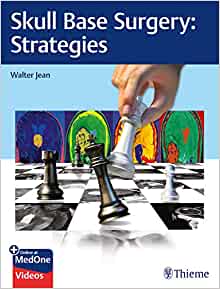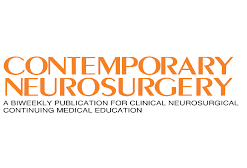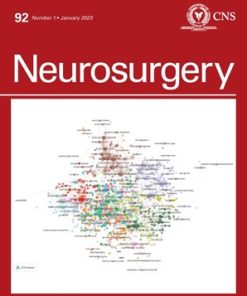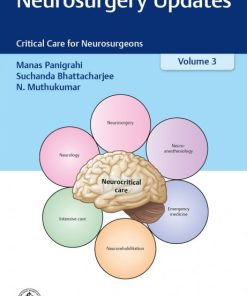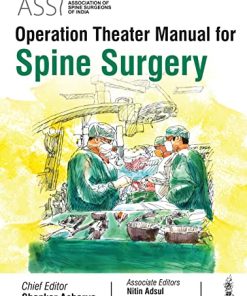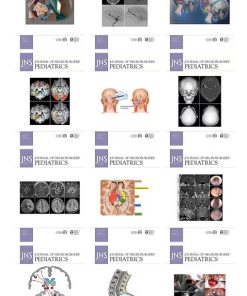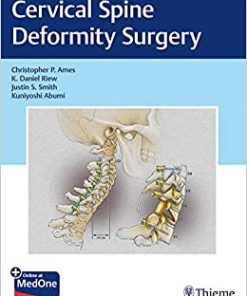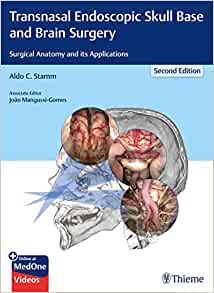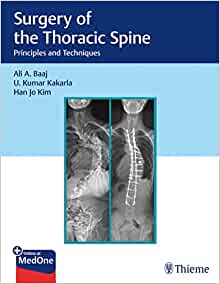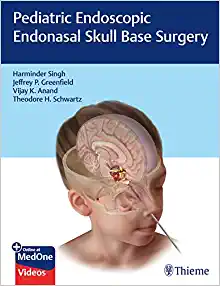Discover the Latest Advances in Neurosurgery: A Comprehensive Guide to the Best Books on the Subject
Discover the Latest Advances in Neurosurgery
Are you looking to stay up-to-date on the latest advances in neurosurgery? Look no further than our comprehensive Neurosurgery book! This book provides a comprehensive overview of the field, from basic principles to the most advanced techniques. It covers topics such as anatomy, physiology, pathology, imaging, and surgical approaches. With detailed illustrations and step-by-step instructions, this book is an invaluable resource for any neurosurgeon. Get your copy today at Neurosurgery Books and start learning about the latest developments in neurosurgery!
Neurosurgery Books
Neurosurgery Books
Neurosurgery Books
Neurosurgery Books
Neurosurgery Books
Neurosurgery Books
Neurosurgery Books
Surgical Nuances of Head Injury (Original PDF from Publisher)
Neurosurgery Books
Neurosurgery Updates Critical Care for Neurosurgeons Volume 3 (Original PDF from Publisher)
Neurosurgery Books
Journal of Neurosurgery: Spine 2022 Full Archives (True PDF)
Neurosurgery Books
Neurosurgery Books
Journal of Neurosurgery: Pediatrics 2022 Full Archives (True PDF)
Neurosurgery Books
Manual de Neurocirurgia, 8th Edition (Original PDF from Publisher)
Neurosurgery Books
The Comprehensive Neurosurgery Board Preparation Book: Illustrated Questions and Answers (EPUB)
Neurosurgery Books
Condutas em Neurocirurgia: Fundamentos Práticos – Crânio (EPUB)
Neurosurgery Books
Neurosurgery Books
Neurosurgery Books
Transnasal Endoscopic Skull Base and Brain Surgery: Surgical Anatomy and its Applications (EPUB)
Neurosurgery Books
Surgery of the Thoracic Spine: Principles and Techniques (EPUB)
Neurosurgery Books
Meningiomas of the Skull Base: Treatment Nuances in Contemporary Neurosurgery (EPUB)
Neurosurgery Books
Cirurgia Endoscópica da Coluna Vertebral, 2nd Edition (Original PDF from Publisher)
Neurosurgery Books
Neurosurgery Books
Surgical Techniques in Moyamoya Vasculopathy: Tricks of the Trade (EPUB)
Neurosurgery Books
Neurosurgery Books
Sagittal Balance of the Spine: From Normal to Pathology: A Key for Treatment Strategy (EPUB)
Neurosurgery Books
Introduction
Are you looking to stay up-to-date on the latest advances in neurosurgery? Look no further than this comprehensive guide to the best books on the subject. Here, you'll find a selection of books that cover the most recent developments in neurosurgery, from the basics to the cutting-edge. Whether you're a medical professional or just curious about the field, these books will provide you with an in-depth look at the latest advancements in the field. Get ready to explore the fascinating world of neurosurgery and discover the latest breakthroughs!
Overview of Neurosurgery: What It Is and How It Works
Neurosurgery is a specialized branch of medicine that focuses on the diagnosis and treatment of disorders of the nervous system, which includes the brain, spinal cord, peripheral nerves, and extra-cranial cerebrovascular system. Neurosurgeons are highly trained medical professionals who use a variety of techniques to diagnose and treat neurological conditions.
Neurosurgery is a complex field that requires extensive knowledge of anatomy, physiology, pathology, pharmacology, and other medical disciplines. Neurosurgeons must be able to accurately diagnose and treat a wide range of neurological conditions, from traumatic brain injuries to tumors and degenerative diseases. They must also be able to perform delicate surgical procedures with precision and skill.
The most common type of neurosurgery is called craniotomy, which involves making an incision in the skull to access the brain. During a craniotomy, a neurosurgeon may remove a tumor, repair a damaged blood vessel, or perform a biopsy. Other types of neurosurgery include endovascular surgery, which uses catheters to access the brain through the blood vessels; stereotactic surgery, which uses imaging technology to guide the surgeon’s instruments; and minimally invasive surgery, which uses small incisions and specialized tools to access the brain.
Neurosurgeons also use a variety of imaging technologies to diagnose and monitor neurological conditions. These include computed tomography (CT) scans, magnetic resonance imaging (MRI) scans, and positron emission tomography (PET) scans. In addition, neurosurgeons may use ultrasound, X-rays, and other imaging modalities to diagnose and treat neurological conditions.
Neurosurgery is a complex and demanding field of medicine that requires a high level of expertise and experience. Neurosurgeons must have a thorough understanding of the anatomy and physiology of the nervous system, as well as the latest advances in medical technology. Neurosurgeons must also be able to work closely with other medical professionals, such as neurologists, radiologists, and anesthesiologists, to ensure the best possible outcome for their patients.
Types of Neurosurgical Procedures and Their Benefits
Neurosurgical procedures are a type of surgery that focuses on the brain, spine, and peripheral nerves. Neurosurgeons use a variety of techniques to diagnose and treat neurological conditions, including tumors, trauma, vascular diseases, infections, and degenerative disorders. Neurosurgical procedures can be used to relieve pain, restore function, or improve quality of life.
The most common neurosurgical procedure is a craniotomy, which involves making an incision in the skull to access the brain. This procedure is used to remove tumors, repair blood vessels, or relieve pressure on the brain. It can also be used to implant electrodes for deep brain stimulation, a treatment for certain movement disorders.
Another common neurosurgical procedure is a laminectomy, which involves removing part of the vertebrae to relieve pressure on the spinal cord. This procedure is often used to treat herniated discs, spinal stenosis, and other conditions that cause nerve compression.
Spinal fusion is another type of neurosurgical procedure. During this procedure, two or more vertebrae are joined together with metal rods and screws to stabilize the spine. Spinal fusion is used to treat scoliosis, spondylolisthesis, and other conditions that cause instability in the spine.
Ventriculostomy is a procedure used to drain fluid from the ventricles of the brain. This procedure is used to reduce intracranial pressure caused by hydrocephalus, a condition in which too much cerebrospinal fluid accumulates in the brain.
Stereotactic radiosurgery is a type of neurosurgical procedure that uses radiation to target and destroy tumors or other abnormal tissue. This procedure is minimally invasive and does not require an incision.
Neurosurgical procedures can provide many benefits, including improved quality of life, reduced pain, and restored function. They can also help prevent further damage to the brain or spine, reduce the risk of complications, and improve overall health.
The Latest Advances in Neurosurgery Technology
Neurosurgery technology has come a long way in recent years, with advances in imaging, robotics, and other technologies allowing for more precise and less invasive treatments. Neurosurgeons are now able to perform complex procedures with greater accuracy and safety than ever before.
One of the most significant advances in neurosurgery technology is the use of imaging techniques such as MRI and CT scans. These scans allow doctors to get a detailed view of the brain and its structures, enabling them to make more accurate diagnoses and plan more effective treatments. In addition, these scans can be used to monitor the progress of a procedure, allowing surgeons to adjust their approach if necessary.
Robotic surgery is another major advancement in neurosurgery technology. Robotic systems allow surgeons to perform delicate operations with greater precision and accuracy than ever before. The robot can be programmed to follow a specific set of instructions, allowing the surgeon to focus on the task at hand without worrying about making mistakes. This technology has been particularly useful in minimally invasive surgeries, where the robot can access areas of the brain that would otherwise be difficult or impossible to reach.
Computer-assisted navigation systems have also become increasingly popular in recent years. These systems use 3D imaging to create a virtual map of the brain, allowing surgeons to accurately plan and execute complex procedures. This technology has been especially beneficial in deep brain stimulation (DBS) surgeries, where the exact placement of electrodes is critical for successful treatment.
Finally, new developments in stem cell research have opened up exciting possibilities for treating neurological disorders. Stem cells can be used to replace damaged or missing neurons, potentially restoring lost function and improving quality of life. While this technology is still in its early stages, it holds great promise for the future of neurosurgery.
Overall, the latest advances in neurosurgery technology have revolutionized the field, allowing surgeons to perform complex procedures with greater accuracy and safety than ever before. With continued research and development, these technologies will continue to improve, providing even better outcomes for patients in the years to come.
Common Neurosurgical Conditions and Treatments
Neurosurgery is a specialized field of medicine that focuses on the diagnosis and treatment of disorders of the nervous system, including the brain, spinal cord, peripheral nerves, and extra-cranial cerebrovascular system. Neurosurgeons are highly trained specialists who use a variety of techniques to diagnose and treat neurological conditions. Common neurosurgical conditions include traumatic brain injuries, stroke, tumors, hydrocephalus, aneurysms, spinal cord injuries, and degenerative diseases such as Parkinson’s and Alzheimer’s.
Traumatic brain injuries (TBI) occur when an external force causes damage to the brain. TBI can range from mild to severe, and symptoms may include confusion, memory loss, headaches, dizziness, nausea, and difficulty concentrating. Treatment for TBI depends on the severity of the injury and may include medications, physical therapy, occupational therapy, speech therapy, and surgery. Surgery may be used to remove blood clots, repair skull fractures, or relieve pressure on the brain.
Stroke is a medical emergency caused by a disruption in the blood supply to the brain. Symptoms of stroke include sudden weakness or numbness on one side of the body, difficulty speaking or understanding language, vision problems, and difficulty walking. Treatment for stroke includes medications to reduce swelling and clotting, physical therapy, and sometimes surgery to remove a clot or repair a damaged artery.
Tumors are abnormal growths of cells that can occur anywhere in the body, including the brain and spine. Symptoms of a tumor depend on its size and location, but may include headaches, seizures, changes in behavior, and paralysis. Treatment for tumors typically involves surgery to remove the tumor, followed by radiation therapy or chemotherapy.
Hydrocephalus is a condition in which excess fluid accumulates in the brain, causing increased pressure on the brain tissue. Symptoms of hydrocephalus include headache, vomiting, blurred vision, and difficulty walking. Treatment for hydrocephalus usually involves inserting a shunt to drain the excess fluid from the brain.
Aneurysms are bulges in the walls of arteries that can rupture and cause bleeding in the brain. Symptoms of an aneurysm include sudden, severe headache, nausea, and vomiting. Treatment for an aneurysm typically involves clipping the aneurysm to prevent it from rupturing, or coiling the aneurysm to block off the blood supply.
Spinal cord injuries occur when there is damage to the spinal cord, resulting in loss of sensation and movement below the site of the injury. Symptoms of a spinal cord injury include paralysis, loss of sensation, and difficulty breathing. Treatment for spinal cord injuries may involve medications, physical therapy, and sometimes surgery to stabilize the spine or decompress the spinal cord.
Degenerative diseases such as Parkinson’s and Alzheimer’s are progressive conditions that cause gradual deterioration of the brain and nervous system. Symptoms of these diseases vary depending on the type and severity of the condition, but may include memory loss, difficulty speaking, tremors, and difficulty walking. Treatment for degenerative diseases typically involves medications, physical therapy, and lifestyle modifications. In some cases, surgery may be used to implant electrodes to stimulate certain areas of the brain.
Neurosurgery is a complex and specialized field of medicine that requires extensive training and experience. Neurosurgeons use a variety of techniques to diagnose and treat neurological conditions, and the treatments available depend on the specific condition and its severity.
Best Books on Neurosurgery: A Comprehensive Guide
Neurosurgery is a complex and intricate field of medicine that requires a deep understanding of the brain, spinal cord, and nervous system. For those looking to gain a comprehensive understanding of neurosurgery, Best Books on Neurosurgery: A Comprehensive Guide is an invaluable resource.
This book provides readers with a comprehensive overview of the field of neurosurgery, from its history and development to the latest advances in the field. It covers topics such as anatomy, physiology, pathology, diagnosis, treatment, and rehabilitation. It also includes detailed information on the various types of neurosurgical procedures, including open and endoscopic surgery, stereotactic radiosurgery, and minimally invasive techniques.
The book is written by leading experts in the field, providing readers with up-to-date information on the latest developments in neurosurgery. It also includes case studies and illustrations to help readers better understand the concepts discussed. Additionally, it contains a glossary of terms and a list of resources for further study.
Best Books on Neurosurgery: A Comprehensive Guide is an essential resource for anyone interested in learning more about neurosurgery. It is an invaluable tool for medical students, residents, and practicing physicians alike. With its comprehensive coverage of the field, this book is sure to be a valuable addition to any library.
Conclusion
In conclusion, Discover the Latest Advances in Neurosurgery: A Comprehensive Guide to the Best Books on the Subject is an invaluable resource for anyone interested in learning more about neurosurgery. It provides a comprehensive overview of the latest advances in the field, as well as detailed reviews of the best books available. With its concise yet informative writing style, this guide is sure to be a valuable asset to any medical professional or student looking to stay up-to-date on the latest developments in neurosurgery.

